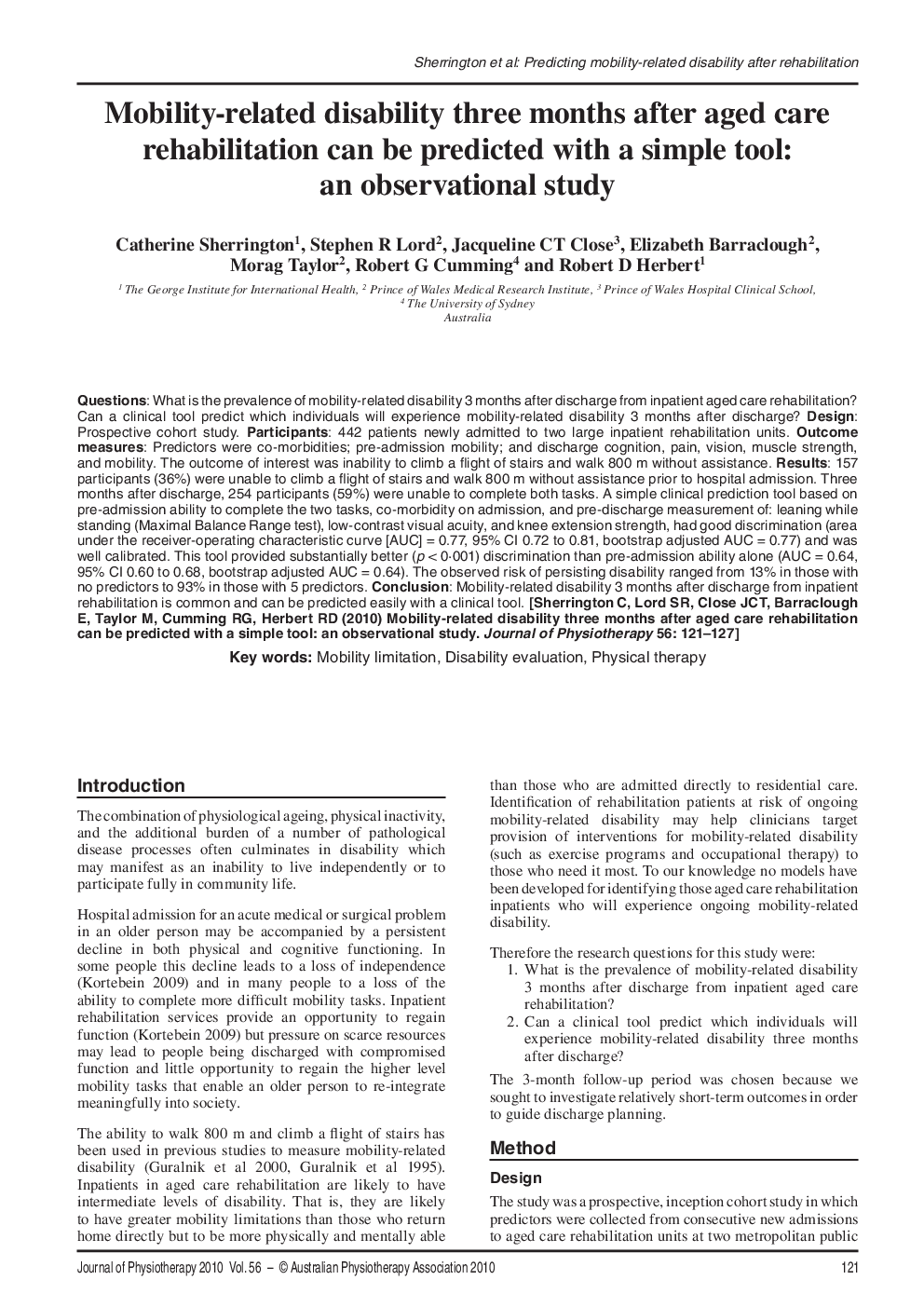| Article ID | Journal | Published Year | Pages | File Type |
|---|---|---|---|---|
| 2622742 | Journal of Physiotherapy | 2010 | 7 Pages |
QuestionsWhat is the prevalence of mobility-related disability 3 months after discharge from inpatient aged care rehabilitation? Can a clinical tool predict which individuals will experience mobility-related disability 3 months after discharge?DesignProspective cohort study.Participants442 patients newly admitted to two large inpatient rehabilitation units.Outcome measuresPredictors were co-morbidities; pre-admission mobility; and discharge cognition, pain, vision, muscle strength, and mobility. The outcome of interest was inability to climb a flight of stairs and walk 800 m without assistance.Results157 participants (36%) were unable to climb a flight of stairs and walk 800 m without assistance prior to hospital admission. Three months after discharge, 254 participants (59%) were unable to complete both tasks. A simple clinical prediction tool based on pre-admission ability to complete the two tasks, co-morbidity on admission, and pre-discharge measurement of: leaning while standing (Maximal Balance Range test), low-contrast visual acuity, and knee extension strength, had good discrimination (area under the receiver-operating characteristic curve [AUC] = 0.77, 95% CI 0.72 to 0.81, bootstrap adjusted AUC = 0.77) and was well calibrated. This tool provided substantially better (p < 0·001) discrimination than pre-admission ability alone (AUC = 0.64, 95% CI 0.60 to 0.68, bootstrap adjusted AUC = 0.64). The observed risk of persisting disability ranged from 13% in those with no predictors to 93% in those with 5 predictors.ConclusionMobility-related disability 3 months after discharge from inpatient rehabilitation is common and can be predicted easily with a clinical tool.
